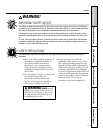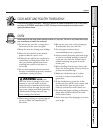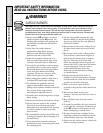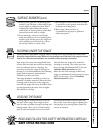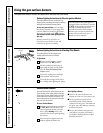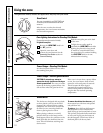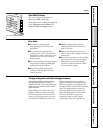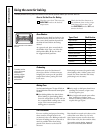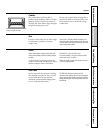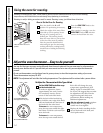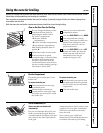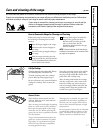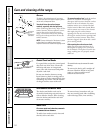
11
ge.com
Safety Instructions Operating Instructions Care and Cleaning Installation Instructions Troubleshooting Tips Consumer Support
Oven Vents
■ The oven is vented through
duct openings at the front of the
backsplash.
■ Do not block the opening when
cooking in the oven—it is important
that the flow of hot air from the oven
and fresh air to the oven burner be
uninterrupted.
■ The vent openings and nearby surfaces
may become hot during baking and
broiling. Do not touch them.
■ Do not leave plastic items on the
cooktop—they may melt if left too
close to the vent.
■ Handles of pots and pans on the
cooktop may become hot if left too
close to the vent.
■ Metal items will become very hot if
they are left on the cooktop and could
cause burns.
■ Do not leave any items on the cooktop.
The hot air from the vent may ignite
flammable items and will increase
pressure in closed containers, which
may cause them to burst.
Oven Shelf Positions
The oven has four shelf supports—
A (bottom), B, C and D (top).
Shelf positions for cooking are suggested
in the Using your oven for baking and
Using your oven for roasting sections.
The type of margarine will affect baking performance!
Most recipes for baking have been developed
using high fat products such as butter or
margarine (80% fat). If you decrease the fat, the
recipe may not give the same results as with a
higher fat product.
Recipe failure can result if cakes, pies,
pastries, cookies or candies are made
with low fat spreads. The lower the fat
content of a spread product, the more
noticeable these differences become.
Federal standards require products
labeled “margarine” to contain at least
80% fat by weight. Low fat spreads, on
the other hand, contain less fat and more
water. The high moisture content of
these spreads affects the texture and
flavor of baked goods. For best results
with your old favorite recipes, use
margarine, butter or stick spreads
containing at least 70% vegetable oil.
The oven has 4 shelf positions.



